Wash in cold water in washing machine
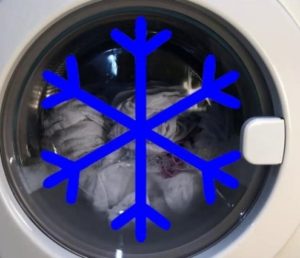 Many housewives mistakenly believe that washing in cool water is useless. It seems to them that only a high degree can remove pollution. Therefore, some users, without hesitation, constantly run the high-temperature mode. Let’s look at the advantages of “cold” cleaning and prove that sometimes it will be much more useful and better than “hot” washing.
Many housewives mistakenly believe that washing in cool water is useless. It seems to them that only a high degree can remove pollution. Therefore, some users, without hesitation, constantly run the high-temperature mode. Let’s look at the advantages of “cold” cleaning and prove that sometimes it will be much more useful and better than “hot” washing.
How to turn off the heating in the machine?
The programs stored in the memory of the automatic machine involve heating water to a certain temperature. Typically, washing machines have modes of 30°C, 40°C, 60°C, 95°C. All models of washing machines from different manufacturers allow the ability to completely turn off the heating in order to wash in cold water.
So, on LG washing machines, in order to start washing without the participation of a heating element, you need to press the “Temperature” button on the control panel until the indicator lights up opposite the inscription “Cold”. In this case, the heating element will not be activated; the machine will use tap water at the original temperature.
Indesit washing machines have a special temperature switch. If you turn the knob to the “Snowflake” icon and start the wash, the water drawn into the system will not heat up. Bosch washing machines are equipped with a button with the “°C” symbol. You should click on it several times until the indicator opposite the snowflake symbol lights up. Candy machines have a separate button on the panel, by clicking on which you can turn off water heating in any mode.
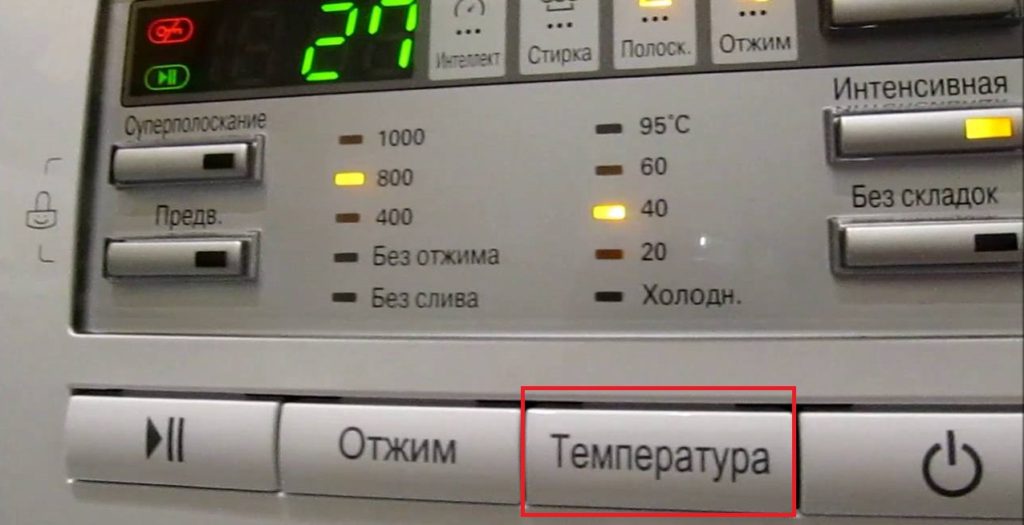
The instructions for a specific washing machine model describe how to wash in cold water.
If the user manual has been lost for a long time, the necessary information can be found on the Internet. To do this, you should create a search query with the full name of the machine, for example, “Samsung WF8590NLW8DYLP instructions.” This is how you will find the “booklet” for the machine in electronic form.
The benefits of cold washing
How does washing in cold water benefit the user? First of all, the energy consumption per cycle is significantly reduced. Heating “eats up” enough kilowatts, and in this case the heating element simply will not work. Don't worry that this cleaning will be ineffective. Modern, high-quality detergents quickly dissolve even in cool water, and wash away dirt without any problems.
There is a misconception that when doing a “cold” wash, you need to put more detergent into the machine. In fact, there is no need to use extra powder, the standard dosage is enough.
However, in some cases it may be necessary to wash in hot water. For example, if necessary:
- carry out antibacterial treatment of things, disinfect fabric;
- remove old, difficult to remove stains;
- wash towels and bed linen.
Thus, a “hot” wash will be useful when processing items that collect more bacteria than everyday clothing. We are talking about towels, which from time to time it is useful to even turn them on the “Boiling” mode. It is better to wash T-shirts, dresses, shirts, skirts, blouses in cold water or at a heating temperature of 30°C. This will prevent the products from deforming, shrinking, and fading.
Housewives' arguments for cold water
 Everyone knows that high-temperature washing destroys the fiber structure of fabrics. This applies most of all to wool and other delicate materials.If you load a woolen sweater into the drum and run the 60°C or 90°C mode, you can remove a blouse that has shrunk 2-3 sizes from the washing machine and has already become “childish.”
Everyone knows that high-temperature washing destroys the fiber structure of fabrics. This applies most of all to wool and other delicate materials.If you load a woolen sweater into the drum and run the 60°C or 90°C mode, you can remove a blouse that has shrunk 2-3 sizes from the washing machine and has already become “childish.”
Other clothing may, on the contrary, stretch due to high-temperature exposure and lose its shape irrevocably. Also, sometimes hot water causes holes to appear on the seams of products, due to the thinning of the fabric fibers during such “heavy” processing for them. So, after a couple of washes, the item may no longer be repairable, and you will have to throw it away.
The main reasons for cold water. She:
- does not destroy fabric fibers, preserves their original structure;
- does not lead to fading of things, but, on the contrary, maintains the brightness of the shades. Hot water, on the contrary, washes away rich colors from the material;
- does not contribute to the appearance of white streaks on clothes, which often remain after high-temperature washing.
An additional advantage of “cold” washing is energy savings.
If you stop daily “refreshing” things at a temperature of 40°C or even 60°C, and instead run a “cold” wash, you may be pleasantly surprised when you receive receipts. The electricity bill will be much lower than usual.
It should also be noted that there is less wear on the sealing collar, which can deteriorate from “boiling water”. The heating element also does not need to work, so the service life of the heating element of the washing machine is extended. And, of course, the things themselves will retain their original shape longer.
Washing in cold modes gives housewives the opportunity to forget about damage and shrinkage of clothes, loss of brightness of fabrics, and stains remaining on things. You should resort to high-temperature programs only in extreme cases when it is really necessary.If you buy high-quality detergents, you won’t have any problems removing stains – cool water will also effectively remove stains.
Interesting:
1 reader comment


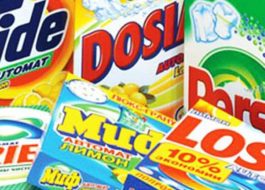
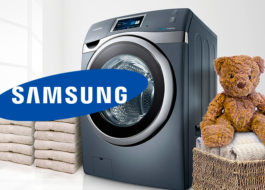


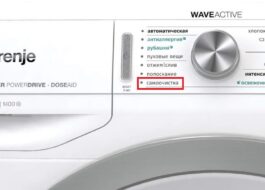














What temperature should I choose for washing in hot water on a Kandy machine?